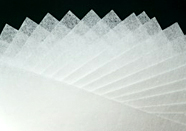Tom Grunder started working with the world’s premiere supplier of dryer sections (Beloit) in 1980.
We asked Tom for his advice on how to improve drying performance from a machine perspective: “It should start with a Dryer Felt Tension Audit. Increasing the tension – and keeping it uniform across the sheet — improves heat transfer.
Sometimes simple things – a felt roll here, a guide change there – can make a big difference. We look at all the critical components of the dryer section – felt rolls, fabric wrap angles, tension rigs, guides, stretchers, you name it. From this, we present the mill with a step-by-step action plan to improve performance. It is not uncommon to realize a 3% increase in drying capacity by following a step-by-step approach.”
A caution: as you increase tension on your felts, make sure that the felt can handle the load. Ask your supplier about the Modulus of Elasticity of its yarns. AstenJohnson dryer felts are the benchmarks in this area – with the tensile strength to stand up to the stretch yet not brittle enough to crack under pressure. Also, have the position checked to determine limits of each component, rolls by position, stretcher system, guide performance, roll mounting brackets, dryer journals, etc. Each play a critical role when looking to increase fabric tension.


